Restore and Pass It Along
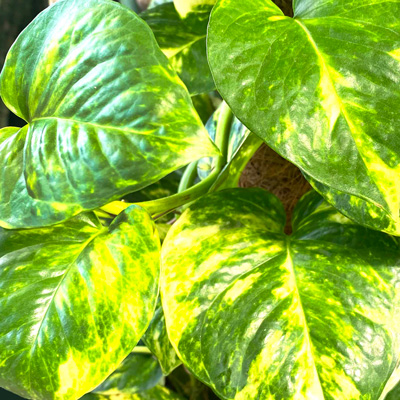
Two years in a row my wife received a living-plant centerpiece at the Christmas party for a board on which she serves. It was a fresh and vibrant 6-inch pot of devil’s ivy.
The plants sat alongside one another in our sunroom for several years. They’re notoriously easy-grow plants, and I took fairly good care of them. But regular feeding wasn’t one of my best gardening practices.
Over a period of time the first plant began to look tired and anemic, so I bought myself a jar of a well-known water-soluble, high-nitrogen plant food.
It only took a couple of weeks before I could begin to see a big difference in the plants, and within 6 months I had vigorous new stems.
I gave each plant a big trim, repotted them into fresh soil and planted them back into the same pots. I applied a fresh dose of fertilizer (which I now use each time that I water) and set them back in the sunroom.
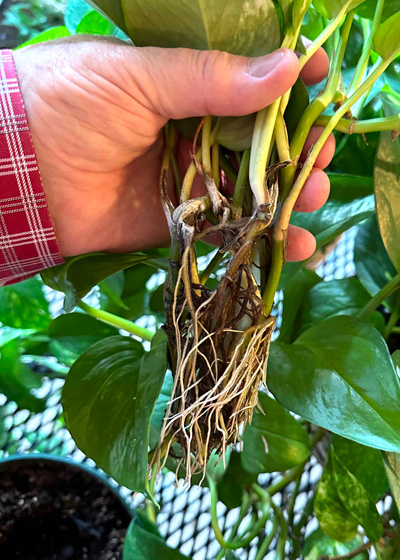
I took those cuttings and stuck them down into a jar of water. I’ve refilled the water glass several times in the ensuing 4 or 5 months, and now it was time to pot up those cuttings and take a batch more.
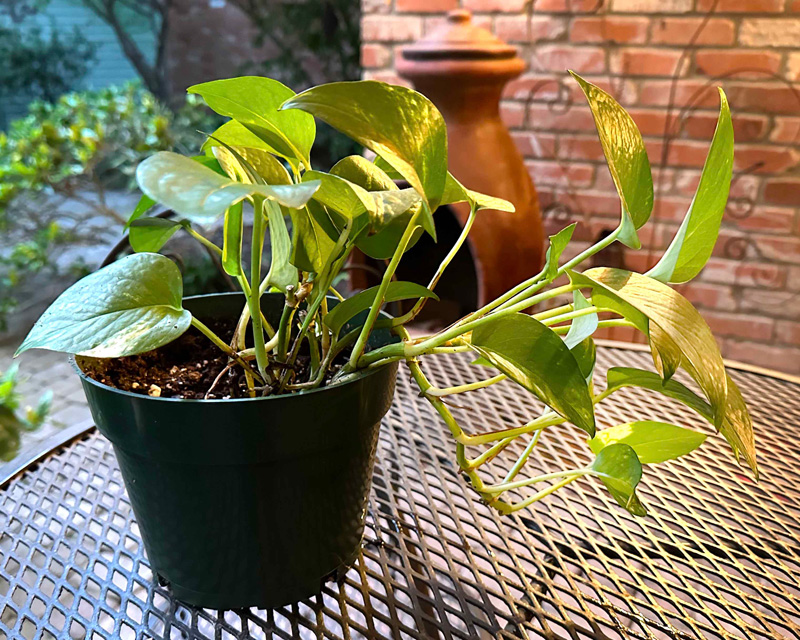
Back to the original plants…
The mother plants have grown vigorously again, so it became time to give them another big trim. I did so earlier this week.

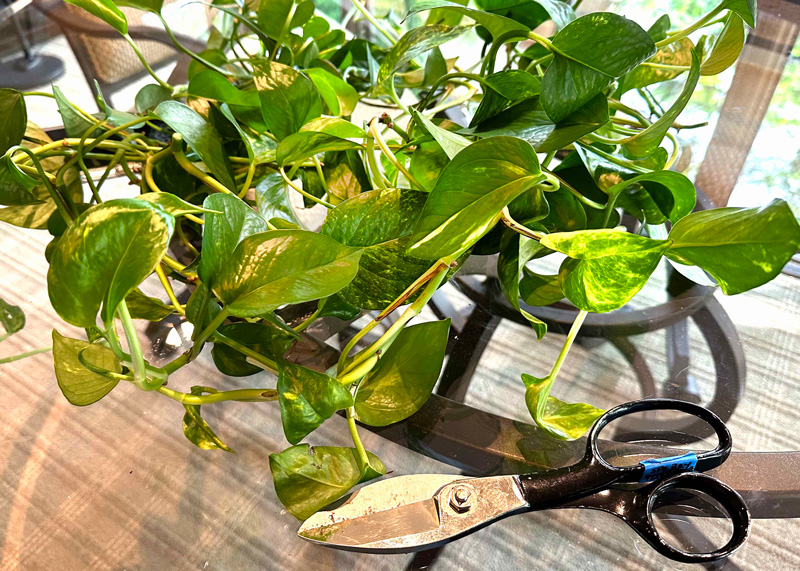
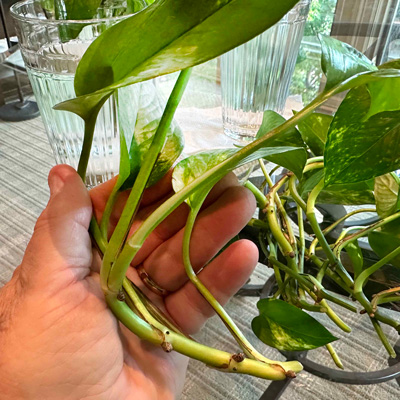
I put 6-8 cuttings (a “fistful”) into each of three glasses of water. I used heavy glass containers for added weight so they wouldn’t tip over from the weight of the plants.
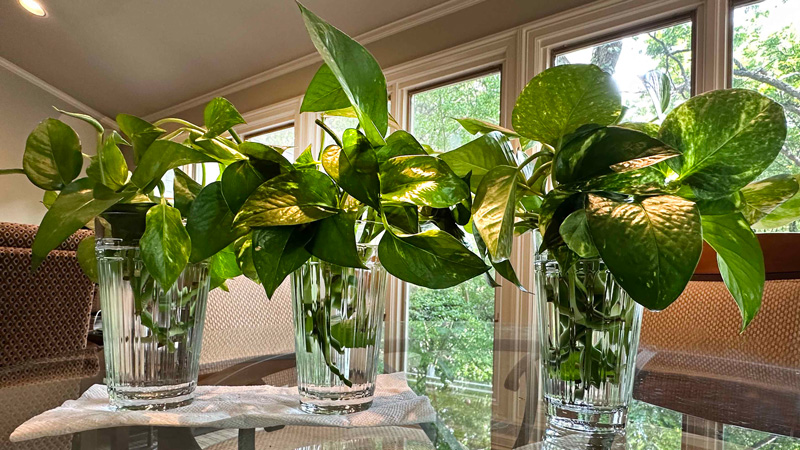
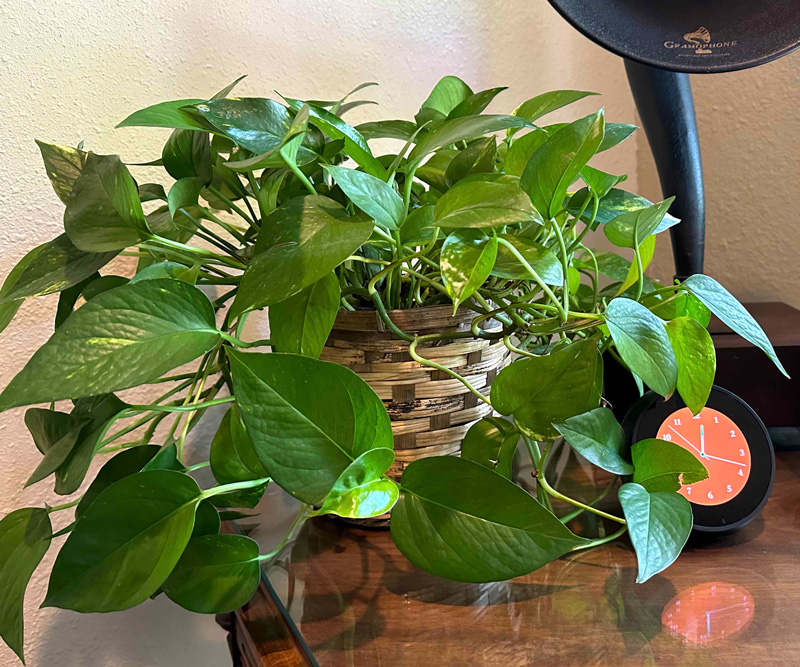
Before I close, though, I want to warn you that not all plants can be started in water. As you well know, there are some plants that are accustomed to growing in water. They’re called “aquatic” plants, and the list includes water lilies and cattails. Their roots can handle those sorts of conditions.
Most plants, however, do best in a potting soil that consists of 50 percent solid matter and 50 percent pore space. Of that 50 percent that’s pore space, the ideal situation is for half of that (25 percent of the original potting soil) to be made up of water and 25 percent to be made up of air (oxygen). Keep that in mind as you garden and you’ll always improve your odds of success.
In the meantime, it’s fine to take this alternative route for your devil’s ivy. It can handle the water.
